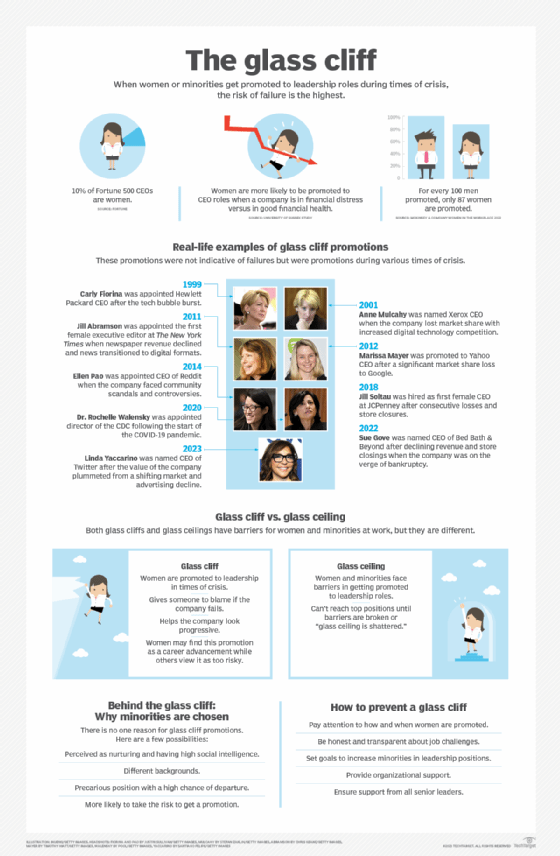Facing the edge: The glass cliff at a glance
Being aware of the glass cliff is vital to preventing it. Understanding and recognizing these harmful situations can help mitigate the negative consequences female leaders face.

The term glass ceiling describes women's invisible barriers in the workplace. The glass cliff is different but can be just as detrimental to women leaders.
Despite diversity, equity and inclusion efforts, women only make up 10% of CEOs in Fortune 500 companies. The glass cliff describes situations where women are promoted to higher positions during times of crisis, such as a recession or a company's financial downturn.
The term was coined by University of Exeter researchers in the U.K. when they published a 2005 report in the British Journal of Management on 100 companies in the Financial Times Stock Exchange 100 Index. It found that promoting women to leadership roles in times of crisis came with negative connotations. Researchers reported that these women were set up for failure. They also compared these promotions to being on a cliff -- fail and fall off. Their male counterparts were less likely to take these positions because they were considered risky.
A recent example of a glass cliff promotion was in 2023 when Twitter promoted Linda Yaccarino to CEO during uncertain times. Yaccarino was named CEO after the value of Twitter plummeted due to loss of advertising revenue and a shifting market.
Awareness is key to preventing or facing a glass cliff. Look at the snapshot below to learn more about the glass cliff.
There are many successful women leaders in tech. Read more about some of the most influential women in tech today. Learn how HR can support women in the workplace to remove invisible barriers.